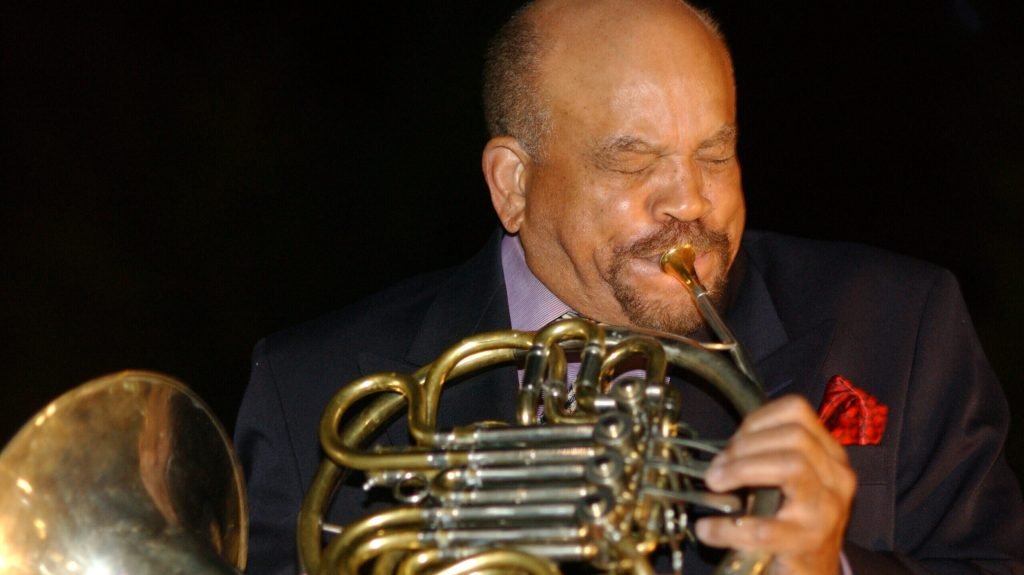I usually write about politics and related topics, but let me digress for a moment. The University of Alabama lost a humble legend on Christmas Eve. Willie Ruff was his name and we were friends.
I had the pleasure of meeting Willie more than 30 years ago when he was a host and producer at Huntsville's flagship NPR station, WLRH-FM. Over the years, we kept in touch sparingly, but each conversation and encounter was meaningful.
Willie was well known in academic and jazz circles. He taught for his 46 years in the music department of his alma mater, Yale University, and shuttled between New Haven, Connecticut, and his home in Killen, Alabama.
Decades before his tenure at Yale, Willie became a professor of living. Hollywood producers should make his autobiography “A Call to Assembly'' into a movie.
Willie grew up in Sheffield, but moved to Evansville, Indiana to live with his father as a child. By the age of 14 he was already playing drums and piano, but to improve his chances of becoming a professional musician he decided to join the army. Willie forged his father's signature on his enlistment papers and obtained his father's blessing just hours before boarding the departing Army bus.
Two years later, Willie enlisted in the 766th Army Air Corps Band in Columbus, Ohio, and was assigned to the same base as the famous Tuskegee Airmen. While there, he met his lifelong musical partner, pianist Ivory “Dwyke” Mitchell. After serving in the Army, Willie and “Dwyke” (what a cool nickname for a musician) formed the Mitchell Ruff Duo, often performing with Louis Armstrong, Duke Ellington, Miles Davis, Count Basie, and Sarah. He opened for shows by Vaughan, Dizzy Gillespie and others. others. Willie's instruments of choice by that time were his french horn and his double bass or upright bass.
My bond with Willie was formed when we met at WLRH in the late 1980s. He excitedly told me about hearing Oakwood College Aeolians on the radio and driving from the Shoals to Huntsville to learn more about this great choir. I was captivated by his exploding pride as a proud Oakwood graduate and the way he shared his musical motivations for spontaneously taking a road trip.
Not only was the Aeolians, led by the iconic Alma “Ma” Blackmon, a great choir at the time; It was that they preserved the art of four-part choral harmony. Willie told me that this musical composition is disappearing in the black community. The main reason for this is that church choirs are moving toward three-part harmonic arrangements.
That may have been the first time I saw the ethnomusicologist Willy. What I didn't know was that there was so much more to come. Willie researched other interesting connections between music and culture, including studies of the connections between African American spirits, Native American musical traditions, and the Psalms sung in the Scottish Hebrides. During his travels to the Central African Republic, he discovered rhythmic connections between rural pygmy tribes, jazz drumming, and African-American hambones.
Willie Ruff was a fascinating person. Every chance I had to talk to him was an adventure. our interview Helped create this NPR story. Let's raise every voice and singalso known as the Black National Anthem.
The last time I saw Willie was probably at the WC Handy Festival in the early 2000s, when Take 6 headlined. The 10-time Grammy Award winner and I had been friends for years and shared ties to Oakwood University (now the University), so Willie encouraged me to introduce them. I chatted with Willie before going backstage and hanging out with everyone. He was charming as always.
We hear that Willie died in a simple house in the woods of Killen, a place he loved. He let me meet him there once. It was an attractive combination of wood and stone, more hunting lodge than home. I think he said he did most of the construction himself.
I will always remember Willie's bright, cheeky smile and laugh. Full of energy and curiosity. He was 92 years old when he passed away, but I think he was actually 22 years old instead of 92 years old. He was forever young.
















